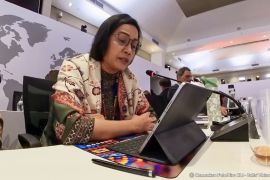"Reducing poverty rate in this region remains unsettled agenda even if several countries have relatively high per capita income," she said in her opening address to a seminar : A Resurgent East Asia: Adapting to New Realities held as a side event of the International Monetary Fund-World Bank Group annual meetings in Nusa Dua, Bali, on Wednesday.
For the first time ever, Indonesia managed to keep down its poverty rate to below 10 percent, she said.
She noted that income disparities in a number of East Asian countries has hampered the attainment of economic inclusion.
The issue of governance including poor public service, weak government institutions and corruption will remain a challenge in the region, she said.
In addition, the rising impact of extreme weather such as flood, drought and heat wave has worsened the situation, she said.
"Inefficient infrastructure also hampers our economic growth," she said.
The slow pace of the East Asian economic growth is influenced by three factors, namely China`s new economic equilibrium, the higher number of senior citizens and trade protection by developed nations, she said.
Quoting a Deloitte report published in September 2017, she said Asia will be home to 60 percent of the world population aged 65 years and above in 2035.
"Indonesia has youth population demography. Unfortunately, we are not the biggest country in this region," she said.
To address the various challenges, East Asian countries should direct their policies towards more positive activities by capitalizing on the globalization and technological progress, she said.
Reporting by Yashinta Difa Pramudyani
Editing by Suharto
Reporter: Antara
Editor: Suharto
Copyright © ANTARA 2018












